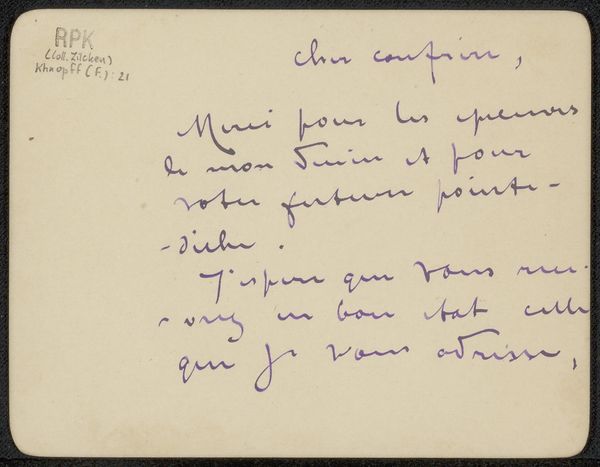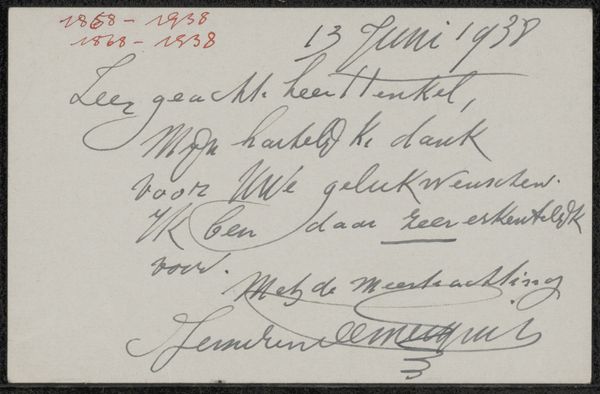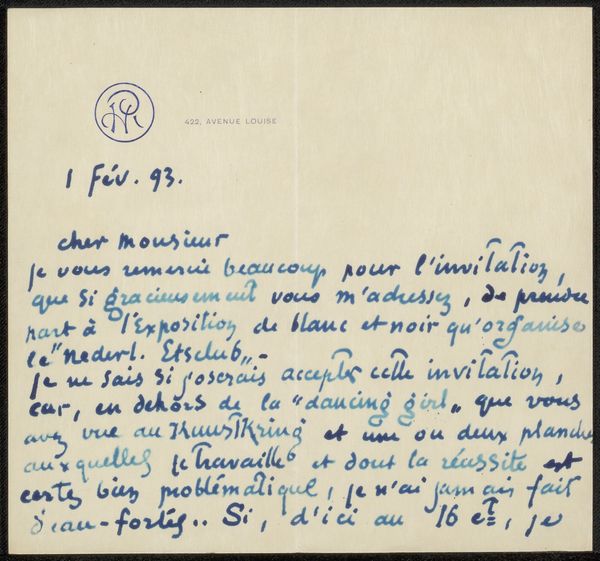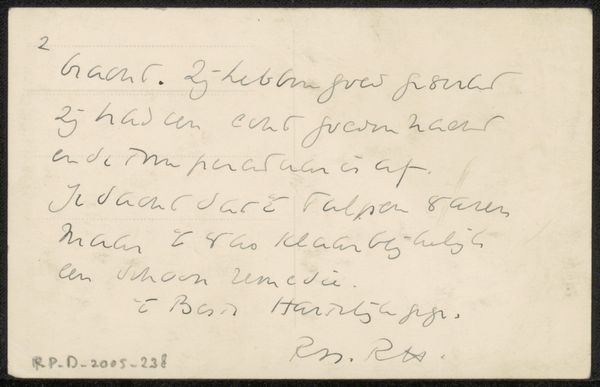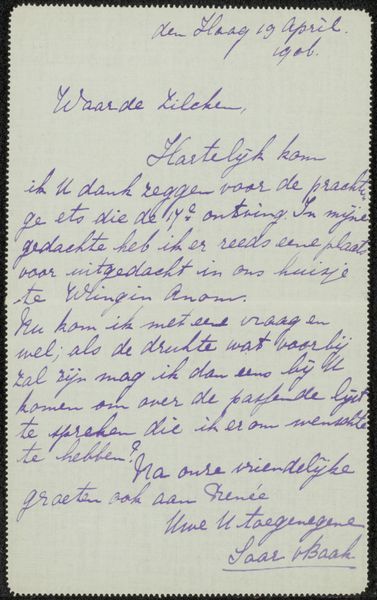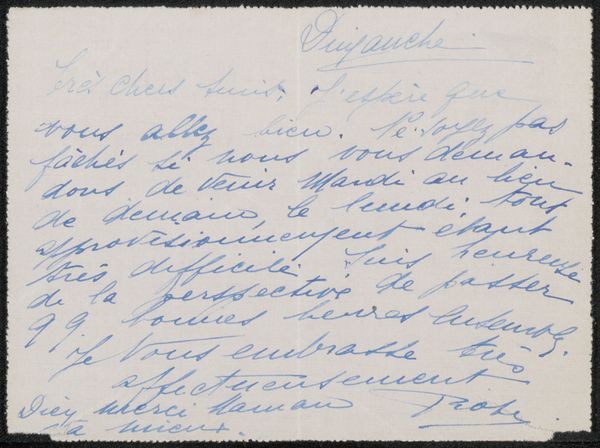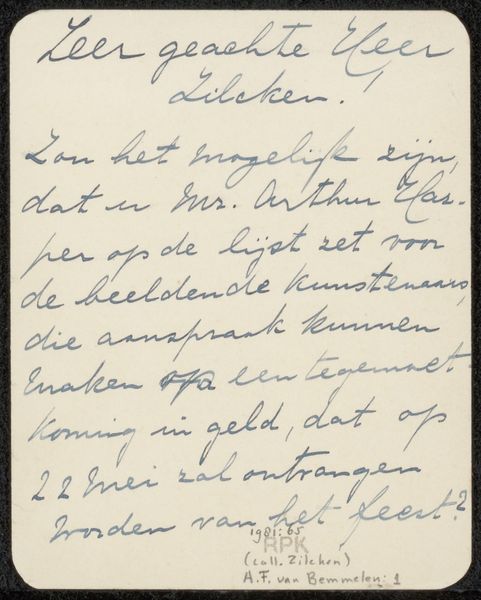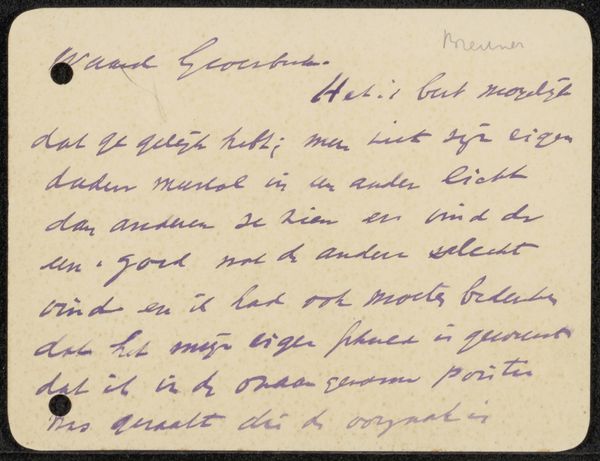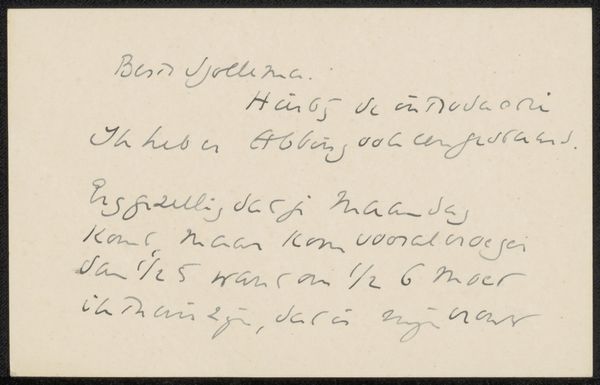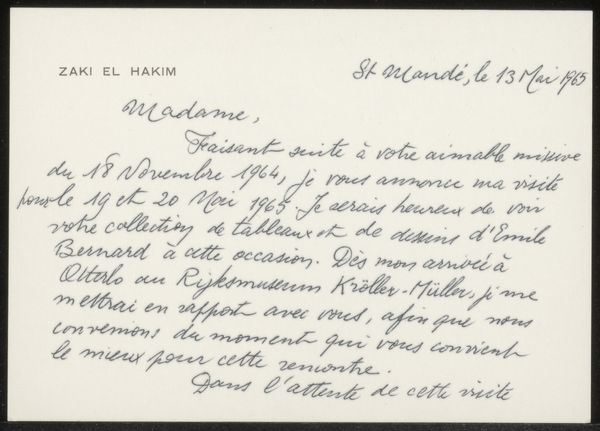
drawing, paper, ink
#
portrait
#
drawing
#
hand-lettering
#
hand lettering
#
paper
#
ink
#
calligraphic
#
calligraphy
Copyright: Rijks Museum: Open Domain
Curator: This piece, "Visitekaartje aan Philip Zilcken," is a calling card designed by Philippe Wolfers before 1922, rendered in ink on paper. What strikes you about it? Editor: The hand-lettering feels very personal and elegant, but the card itself, as a medium, seems almost like a statement about the artist’s identity and status. How do you interpret this work beyond its aesthetic qualities? Curator: Well, let’s think about the social function of calling cards during that period. They weren’t merely practical; they performed important social work, signaling relationships and conveying social standing. Wolfers' elegant calligraphy becomes a form of performative identity, subtly asserting his own position within a cultural hierarchy. This simple card embodies power dynamics, reflecting the artist’s understanding and navigation of his social milieu. Editor: So, it’s more than just a pretty card, it's about claiming space? Curator: Precisely! The act of handwriting, the deliberate flourishes of the script—these weren’t accidental. They communicate Wolfers' self-awareness and his intention to position himself advantageously within the network of artistic and societal relations. This echoes how artists of the period carefully crafted their image. How do you think the recipient, Zilcken, would have interpreted receiving such a card? Editor: Perhaps as a sign of respect, but also a signal that Wolfers considered them to be on a similar social and intellectual level, worthy of this personalized message? Curator: Exactly. It underscores the intertwined nature of artistic expression, social signaling, and the construction of identity. These seemingly small acts of communication really unveil fascinating power structures at play within the art world. Editor: I hadn't thought about it in those terms. I was initially drawn to the aesthetic, but I appreciate learning how something so seemingly simple could carry such rich social significance. Curator: Indeed, understanding the historical context unlocks layers of meaning and helps us understand how identity is constructed.
Comments
No comments
Be the first to comment and join the conversation on the ultimate creative platform.
